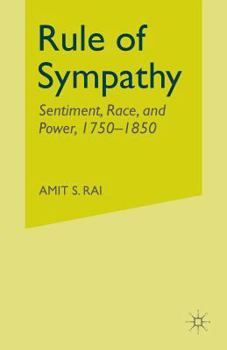Rule of Sympathy: Sentiment, Race, and Power 1750-1850
The Rule of Sympathy is a social and historical critique of sympathy in British discourse in the late eighteenth and early nineteenth century. Although initially associated with feminized or effeminate forms of sentimental discourse (the romance, the novel, the gothic), sympathy came to function as a key technology of gender and race in new evangelical social movements, such as abolitionism and missionizing. Amit Rai argues that sympathy was a paradoxical mode of power. The differences of racial, gender and class inequalities that increasingly divided the object and agent of sympathy were precisely what must be bridged through identification. Yet without such differences, which were differences of power, sympathy itself would be impossible. This paradoxical mode of power transformed the ways in which people came to think of how best to manage, order, and govern individuals and populations in the late eighteenth century.
Format:Paperback
Language:English
ISBN:1349387622
ISBN13:9781349387625
Release Date:July 2002
Publisher:Palgrave MacMillan
Length:225 Pages
Weight:0.64 lbs.
Dimensions:0.5" x 5.5" x 8.5"
Customer Reviews
0 rating





